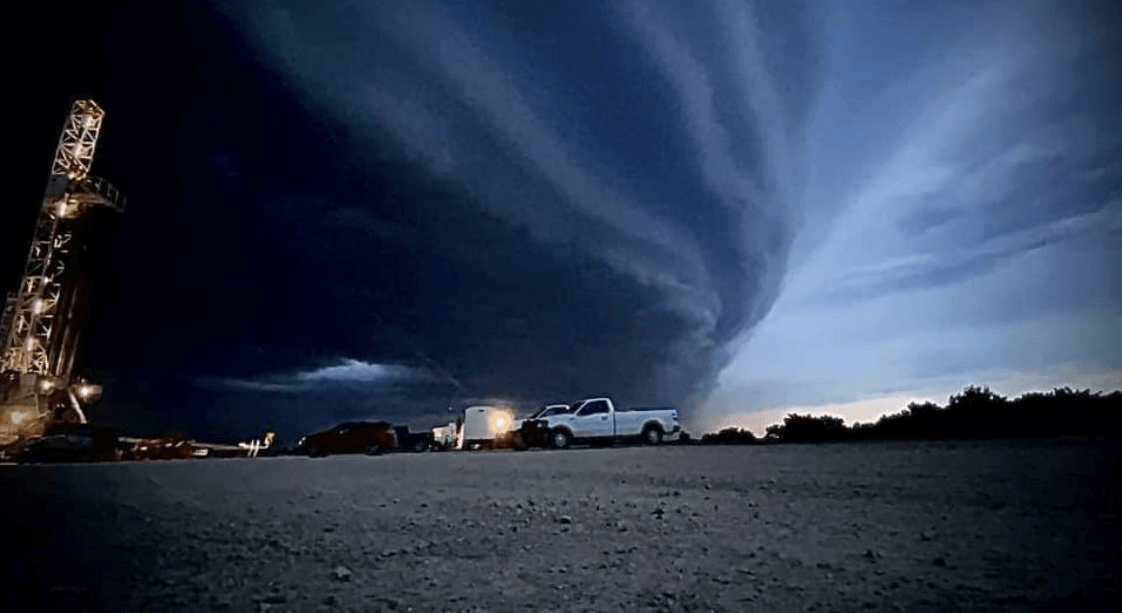This ‘blog’ is inspired by some excellent photography by John Wagner who captured the ‘title-image’ on one of our rigs in Oklahoma.
When difficult times hit the upstream oil industry, something which seems to be increasingly frequent, it helps that companies such as Diversified Well Logging, LLC., (DWL) can rise to the occasion and deliver innovative wellsite services that provide value to operators while keeping costs in line with tight budgets. When geological understanding is key to the long-term economic success of a project, but cost constraints limit spending on the data that provides that geologic knowledge, DWL has the perfect, capital-efficient services to bridge the gap.
Our Oklahoma project, like many others across the North America unconventional plays, is running the Surface Measurement While Drilling (SMWD) program with Hybrid Mud Logging and Elemental Steering or chemosteering. Hybrid Mud Logging uses realtime wellsite XRF data to model mineralogy and lithology and provide true quantitative geologic information while drilling. While traditional mud logging delivers useful observations, Hybrid Mud Logging delivers understanding.
On SMWD jobs our customers realize the benefits of improved geology, geosteering, targeting of zones for improved rates of penetration, overall drilling efficiency, and the benefit of realtime and near-realtime data for completion strategies.
With our elemental data being collected and analyzed at the wellsite, the quality control procedures that DWL use can quickly identify possible errors or inconsistencies. We run laboratory quality calibration standards every 5 samples and the elemental gamma ray (EGR) that is calculated is constantly compared with downhole gamma ray to assure that samples are on-depth and representative of the formations drilled. With quality control being performed in realtime we can quickly fix issues that might take weeks or months to surface if analyzed in a traditional laboratory setting.
With drilled cuttings, formation gas, and drilling parameters – basically the ‘free’ data that every well produces – DWL can deliver the following:
- XRF Elemental cuttings data
- Chemostratigraphy
- Stratigraphic changes in lithology and chemistry
- Analysis of paleoenvironmental, depositional, and provenance indicators
- Sequence stratigraphy
- Calculated gamma (elemental gamma ray)
- Modelled mineralogy
- Facies characterization
- Modelled total organic carbon (TOC)
- Stratigraphic benchmarking – pick tops when gamma ray is poor
- Select casing points
- Geosteering (elemental steering or chemosteering)
- Characterize the lateral – stay in zone – identify faults
- Identify cavings and wellbore stability/instability
- Drilling problem mitigation – chert/pyrite/clay
- Rock physics modelling – grain density and brittleness
- Utilize data where LWD tools are impractical or fail
- Integrate with gas chromatography and mass spectrometry
- Optimize target and completion program
- Integrate drilling parameters, artificial intelligence (A.I.), statistics and modelling
From cuttings to completions, SMWD brings formation evaluation back to the surface. The value to our clients has been proved over and over again. DWL has saved costs by recognizing faults and steering successfully back to the target zone for more production potential. We have also indicated that stopping a well would be the best option when passing certain faults could not allow successful re-steering to the target. The former adds value, the latter saves money. Confidence in our elemental data and modelling has also allowed drillers to avoid costly bit trips when expensive downhole tool have failed. And, elemental investigation of the rocks drilled has identified ‘sweet spots’ for drilling optimization by recognizing that the ‘homogenous’ formation being drilled (homogenous under the microscope) was in fact not homogenous at all. This recognition has recently saved at least two bit and motor runs.
Clearly, SMWD, realtime wellsite analysis of cuttings, is a service that adds value, saves money and more than pays for itself. Of course, it also allows us to deliver high quality geological data on every well drilled for more geocertainty across a pad or field. Geocertainty that was previously considered to be in the realm of downhole logging tools and cores. Bringing evaluation to the surface reduces initial cost (we are a fraction of core and LWD costs) and the risk and extra cost of a failed LWD or coring tool (our replacement equipment can be on the road to the wellsite within an hour or so.)
DWL’s vision for the future is a future we deliver now. We have evolved traditional mud logging services to create innovative methods to bring value to our customers; we bring capital-efficiency to the upstream oil industry helping to weather the storm of economic and political factors that affect us all.
(Photograph by John Wagner – DWL Field Supervisor)

 Diversified Well Logging
Diversified Well Logging